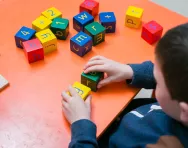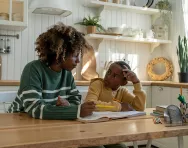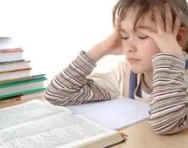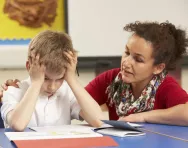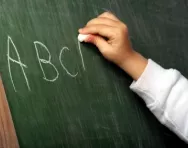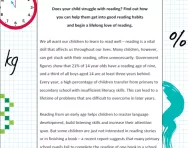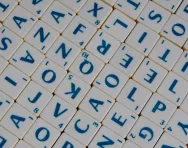Important update from TheSchoolRun
For the past 13 years, TheSchoolRun has been run by a small team of mums working from home, dedicated to providing quality educational resources to primary school parents. Unfortunately, rising supplier costs and falling revenue have made it impossible for us to continue operating, and we’ve had to make the difficult decision to close. The good news: We’ve arranged for another educational provider to take over many of our resources. These will be hosted on a new portal, where the content will be updated and expanded to support your child’s learning.
What this means for subscribers:
- Your subscription is still active, and for now, you can keep using the website as normal — just log in with your usual details to access all our articles and resources*.
- In a few months, all resources will move to the new portal. You’ll continue to have access there until your subscription ends. We’ll send you full details nearer the time.
- As a thank you for your support, we’ll also be sending you 16 primary school eBooks (worth £108.84) to download and keep.
A few changes to be aware of:
- The Learning Journey weekly email has ended, but your child’s plan will still be updated on your dashboard each Monday. Just log in to see the recommended worksheets.
- The 11+ weekly emails have now ended. We sent you all the remaining emails in the series at the end of March — please check your inbox (and spam folder) if you haven’t seen them. You can also follow the full programme here: 11+ Learning Journey.
If you have any questions, please contact us at [email protected]. Thank you for being part of our journey it’s been a privilege to support your family’s learning.
*If you need to reset your password, it will still work as usual. Please check your spam folder if the reset email doesn’t appear in your inbox.
Dyslexia: strengths, advantages and opportunities

Despite not always being high achievers in certain areas such as reading or spelling, dyslexic children can excel in many activities. The way in which they approach their work can often give them a great advantage. Here are some typical – positive – characteristics of dyslexic children:
Determination
Children with dyslexia are often more determined to succeed and can be more hardworking than most children their age. In fact dyslexia can in itself be a motivating factor in a child's attitude towards work, giving them greater patience and perseverance with tasks.
Creative thinking
A dyslexic child often excels in lessons which encourage creativity and the use of imagination, such as drama, art, and music. This freedom of expression enables unique and personal responses to activities.
Awareness of shapes
Those with dyslexia often have an innate ability to visualise 3D images from 2D plans and rearrange them mentally in order to create unique ideas. Architecture and design roles which require them to build and construct are ideal and help unleash their creative potential.
Lateral thinking
Dyslexic children often retain and decipher information in a different way to other children. They can think laterally and see a link between sometimes unconnected ideas which means they can ‘see' what others may not.
Famous dyslexics
Dyslexia doesn’t have to be a barrier to success. Many well-known figures have had dyslexia. It is believed that Albert Einstein was dyslexic, as well as actors Orlando Bloom and Whoopi Goldberg, boxer Mohammad Ali, Virgin boss Richard Branson, artist Leonardo da Vinci, musician John Lennon and politician Winston Churchill, to name but a few! The success and achievements of these individuals shows that with motivation and support, dyslexia need not be a stumbling block.
Supporting children with dyslexia
Every person has their own unique learning style. Understanding how dyslexic children learn best is vital to creating a positive and constructive learning experience for them both in school and at home. Try these tips:
- Using creative materials, such as clay or paint, will help your child visualise what they are trying to learn. Encourage your child to paint the alphabet or words on a big piece of paper and later on when having a bath, recap what they have learnt by drawing on the wall with bath crayons. The hands-on approach will make word-play fun and consolidate learning.
- Use colours to organise things, such as books, folders and notebooks so they correspond with each other making it easier for your child to access their work.
- Read your child a bedtime story but with a twist. Choose their favourite story book but tell them they have to read one specific word each time it appears. The fact that they are concentrating on reading their assigned word will help them remember it. The next night give them two words to remember and so on.
- Play ‘hide and seek' with your child and their favourite object. Simply hide the object, for example a toy, and leave short notes around the house giving them clues as to where it is hidden. This will encourage them to read in order to find the item.


